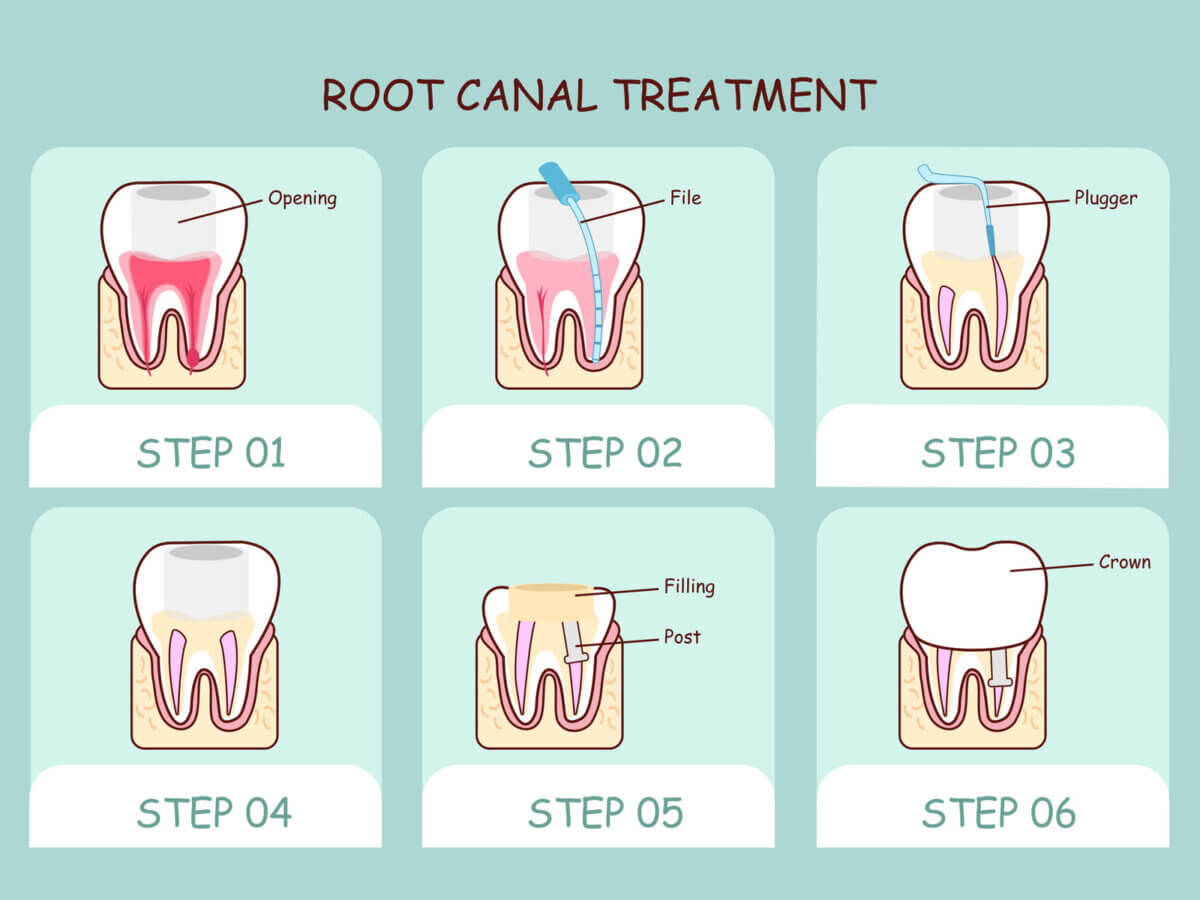Blog
Dental hygiene tips for healthy teeth & gums

Types of Root Canal Treatment
Do you want to know more about endodontic procedures before scheduling an appointment with a specialist? Many people who need dental care are researching ahead of time to prepare themselves better. It’s smart to do so, as your chances of having a positive experience with any necessary surgery increase with your level of preparation.
What is a root canal?
A root canal procedure can save the tooth when a tooth’s pulp becomes diseased or injured. This procedure is also known as endodontic treatment. The dental pulp, the tooth’s fragile inner core, is drilled out during this procedure. Connective tissue, nerves, and blood vessels comprise the dental pulp, which reaches into the tooth roots.
The area is then filled and sealed after the pulp has been removed. The tooth’s crown, or chewing surface, can also be replaced if necessary. Root canal therapy can be performed by either a general dentist or an endodontist.
Types of root canal procedures
The three types of endodontic operations listed below are among the most frequently performed by endodontists nowadays.
- Root canals
Today, endodontists typically carry out root canal therapy. When a patient visits the dentist with an infected tooth, the dentist operates to remove the infection and restore the tooth’s normal function. A local anesthetic will be administered before the endodontist drills a tiny hole into the tooth and extracts the infected pulp. After the root canal has been completed, the tooth will be cleaned, filled, and sealed.
- Apicoectomy
If root canal treatment fails to resolve a patient’s tooth pain, an apicoectomy is another endodontic operation that can be performed. An endodontist will snip off the very end of the tooth’s root and then fill and seal the space left behind. Instead of drilling a hole in the tooth, an endodontist will create a small incision in the gums to reach the tooth’s root.
- Fix chipped teeth
Endodontists classify cracked teeth into a few categories, and the treatment a patient needs to fix a cracked tooth depends on the category the tooth falls into. Craze lines, fractured cusps, split teeth, vertical root fractures, and cracks are all types of cracked teeth. The tooth could be lost if any of these fissures are left untreated. Fillings, crowns, endodontic surgery, and removals are all viable alternatives when dealing with broken teeth.
When is root canal treatment necessary?
A seriously infected or damaged tooth can be saved with root canal treatment. Tooth decay, repetitive dental procedures, normal wear and tear, gum disease, broken fillings, and trauma are all potential causes of tooth infection.
Bacteria can grow inside a tooth if the dental pulp has been injured. The result can be an abscess, a pus-filled pocket that develops at the root tip due to infection.
If feasible, try to preserve your tooth. When biting and chewing, it outperforms a false tooth every time. When you lose a tooth, it can cause a domino effect of oral health issues. Dental procedures get more involved when a natural tooth must be extracted and replaced with an artificial one. To save a tooth, root canal treatment is frequently necessary.
Signs of going for root canal therapy
It’s not always obvious when a tooth has reached the point where it needs a root canal. Typical symptoms include
- Gum swelling and tenderness
- Sensitivity to hot and cold that doesn’t go away after the stimulus is removed
- Darkening of the teeth.
- Symptoms such as facial or neck edema, pus around an infected tooth, and tooth loss
Wrapping up
In most cases, root canal treatment is no more painful than a regular filling but can be more irritating. Making an appointment with an endodontist for a full mouth evaluation is the only method to determine if you require endodontic services. It would be best to understand what to expect from modern endodontic treatment now that you know about some more popular techniques.


